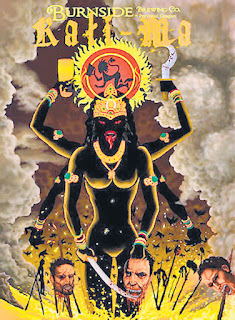It is a story which, when it erupted some 10 years back in
the national media, had us sitting on the edges of our seats and biting nails.
Till then, folks of my generation had only heard of RA&W and its
clandestine and espionage activities. We had heard even less about
counter-espionage, except in a few glamourized versions in James bond movies.
Of course, we always had Le Carre and his “safe houses”. But rarely anything in
the Indian context.
The even now faceless Rabinder Singh caught our collective
imagination as the quintessential “traitor”. A man who ducked our internal and
external intelligence agencies, siphoned off tonnes of information and also
managed to give Indians sleuths the slip, before disappearing somewhere in the
US of A under layers of fake identities and security rings.
Amar Bhushan, a former bureaucrat (I assume he worked with
RAW), finally gives us a clear picture, though fictionalized, of what really
happened in the episode.
In many ways far more realistic than even Le Carre’s
rendering of the murky world of espionage and counter espionage, "Escape To
No-Where" is a surprise package. The very first page grabs you by the collar,
demanding attention. It is a thoroughly deglamourized portrayal of the Indian
external intelligence agency’s workings, replete with red-tape, procedural
dreariness and operational lethargy. No blood. No fancy sequences. No smart-ass
repartees. Yet, that is what makes this whole tale all the more nerve-wracking.
Amar Bhushan, the author, trips several times in the writing
style department. The copy-editors and proof readers have done a job that would
put even the south block babus to shame. Yet the glaring mistakes, jarring
typos and a surfeit of clichés do not take a wee bit away from the mystery of
one of the biggest espionage scandals that hit India in recent memory.
I’m sure Rabinder Singh, perched comfortably – or even not
so comfortably, going by the book – in the hinterlands of America, would thoroughly enjoy this systematic peeling
away of his life as a US
mole in the heart of India’s
premier spy organization.
A great book.
